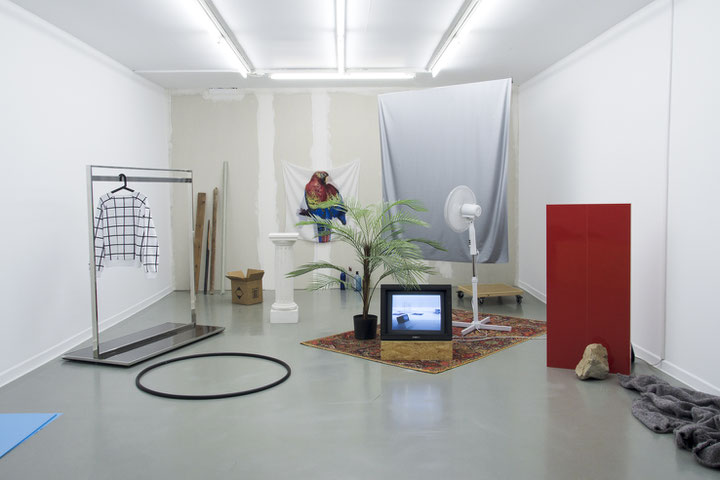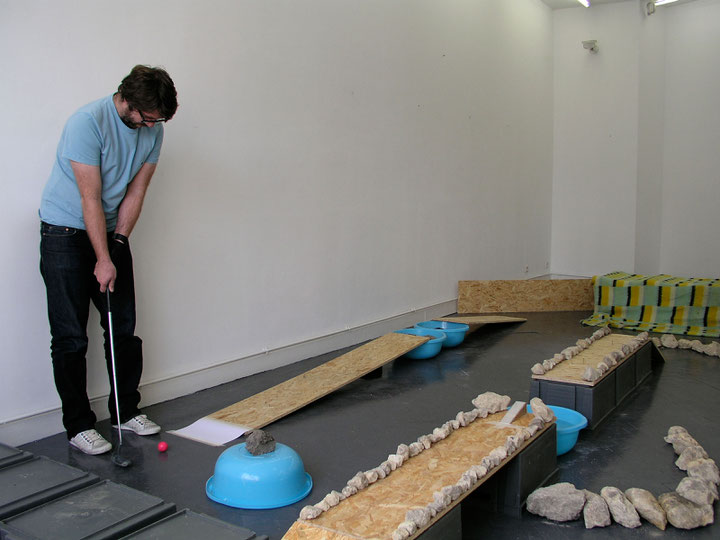Reports that say that something hasn't happened are always interesting to me, because as we know, there are known knowns; there are things we know we know. We also know there are known unknowns; that is to say we know there are some things we do not know. But there are also unknown unknowns – the ones we don't know we don't know.
- Donald Rumsfeld, February 12, 2002
This quote could be regarded as the catch phrase of speculation. In Errol Morris's 2013 biographical documentary on Rumsfeld, “The Unknown Known,” the former US secretary of Defence, explains his hyperbolic cold-war-game-theory-logic. He gives the surprise Japanese attack on Pearl Harbor as an example for “lack of Imagination” of the US military. Imagination here gets a very different meaning than what we would usually assign to it. For him, the different scenarios about “what could happen” require instrumental imagination, oscillating between probability and possibility. Therefore he sees the limit of his own knowledge in himself, meaning that he cannot learn anything new - his only enemy is his “lack of imagination.” In this sense he is compelled to plan (and execute) perpetual pre-emptive strikes. Lack of data (unknown unknown) turns from a failure to gather intelligence to a fruitful and almost limitless sphere of speculative scenarios; spiralling repetitions, chasing its own tail, following his own shadow – this is where imaginative energy is invested today.
After more than a decade since the US-UK invasion to Iraq, there is no Middle East anymore. The refugees from Syria entering Europe are but the most recent of a series of exoduses from Palestine, Iraq, Lebanon and Syria due to continuous war in the region. The fact is that the disintegration of these countries is a direct result of the execution of this RAND-corporation-style way of thinking that Rumsfeld demonstrated as secretary of defence. Indeed, a case of serious lack of imagination.
Speculation
Speculation has become the epitome of this moment. It is commonly used in recent years in philosophy, literature, politics, arts and science. As varied as the usages of the term may be, the current emergence of speculation in these different fields stems from the world of finance capital. The original meaning of speculation it seems, has always been that of an instrumental imagination. Its meaning today is that of absolute pragmatism, generating more and more extreme models within the current existing system of control and accumulation. This mode of speculation we are faced with today goes the furthest away as possible from any notion of revolution or even reform. The age of speculation is an era in which all forces are mobilized to perform unexpected and disruptive actions simply for everything to remain the same.
Since nothing is certain under the rule of finance capital, we are all busy speculating. Both the investment banker and the precariat are constantly compelled to create models by which they can conduct themselves. The only invariant element in these models is the perpetuation of this form of finance dominated market economy.
A recent volume of Collapse Journal focused exactly on the genealogy of the contemporary usages of speculation. The volume, titled “Casino Real” is dedicated to “surveying those practices in which intellectual resources are most acutely concentrated on the production of capitalizable risk.” The volume, which aims to uncover the “conceptual underpinnings of methods developed to extract value from contingency – in the casino, in the markets, in life” includes an almost two hundred page long essay by Suhail Malik on the ontology of finance. In it Malik describes a political economy constituted by the ontology of price. He says that “the most advanced theoretical tools available today” are finance and particularly derivatives. From there on he is formulating an ontology of the current financial economic system which operates around the notion of price rather than value.
The shift from value to price has already been highlighted as the foundation for neoliberal doxa. While both value and price can be assigned to any human activity, price in neoliberal economics, is perceived as a market signal that aggregates the knowledge of all actors in the market. Economics becomes under speculation a form of model-making for knowledge gaps between buyers and debtors – these are being speculated on through finance. One of the by-products of this, as David Harvey described in his Brief History of Neoliberalism, is that stock values rather than production becomes the guiding light of economic activity. The speculative mechanisms that result have overwhelming repercussions.
The economic era in which value had a stake in describing human activity was the time of political revolutions and Avant garde. In “The Sadness of Post-Workerism,” David Graeber writes: “While they are not always self-consciously revolutionary, artistic circles have had a persistent tendency to overlap with revolutionary circles; presumably, precisely because these have been spaces where people can experiment with radically different, less alienated forms of life.” The stories of Lenin in Spiegelgasse passing by Cabaret Voltaire or Trotsky with Diego Rivera in Mexico and so forth seem to prove Greaber’s point. Yet, as Graeber states, artists and revolutionaries experiment with notions of value for very different reasons. While revolutionaries aim to overthrow the existing regime and its mechanisms of regulating value, artists are already investigating and practicing new forms of value within the conditions enabled by the surpluses provided by the existing economic regime.
And so, under finance capital, speculation becomes a form of pragmatism gone wild. In the reader Speculation, Now: Essays and Artwork, the afterward by renowned anthropologist Arjun Appadurai includes a description of the way financial traders operate in an environment of extreme volatility: “When the trader is ‘in the liquid,’ when she is entirely in the zone composed of her body, her turret, her skills and her counter-parties. This is the speculative moment, in which the trader seeks to perform an immanent critique of the market as it presents itself in the current moment of prices, volatilities, uncertainties and probabilities”. In his afterward he positions speculation within the realm of action rather than mere contemplation. But the class relations at the core of financial speculation is such that any calculation of risks, threats and opportunities is done by those who act according to their reflections on the actions of those who cannot act nor reflect on their condition.
With the mentioning of immanent critique Appadurai is putting the trader within the vocabulary of Marxism. But if this is what finance is about, being ‘in the liquid’ of extreme volatility then Marxian vocabulary is of course relevant, especially Marx’s conception of alienation that seemed to have disappeared with communicative capitalism. Because the category of alienation does not disappear for the indebted man and woman - take for example, even those employed, and who are saving for a retirement pension. They would find themselves on the one hand depending on their job for their livelihood and at the same time having their pensions in the stock exchange. Now, it might happen that through their pension they hold stocks of their own employer. Therefore, with accordance to the logic that finance outlines, with short term profits in mind, they would want their own jobs to be terminated for redundancy, as to provide better numbers on their stocks’ quarterly report sheets. The so called efficiency policy that may provide profitability on the financial sheets would mean the termination of their own livelihood. This would be one contemporary meaning of Marx’s notion of alienation.
Counter-Speculation
As the example of alienation through pension shows, speculation designates absolute pragmatism today, generating more and more extreme models within the current system. In her opening essay for the Speculation, Now reader, Vyjayanthi Venturupalli Rao stresses that another kind of speculation is needed. She writes of an “uncertainty conceived, not as the lack of knowledge about the content of any specific possibility but rather as the idea that a variety of actualizations can emerge from the event.” To this we can call counter-speculation. With counter-speculation the certainty of our own finance dominated reality can be conceived as precarious, unstable, uncertain in itself. We are not projecting the current reality onto a future that we wish to capture, quantify and bank on, but rather assign the speculative mode of thinking onto the present. Our reality loses its inevitability and turns from certain to unstable, thus open to de-financialized counter-speculation.
Francesco Finizio’s installation “How I Went In & Out of Business for Seven Days and Seven Nights” recounts the weeklong performance that took place in the ACDC Gallery in Bordeaux in October 2008. For a week the artist opened and closed twelve businesses at the new ACDC gallery in Bordeaux. The businesses that succeeded one another during this period were created from a limited vocabulary of poor materials. The gallery space was in a situation of almost constant transformation. Businesses succeeded one another, each rising from the ashes of the previous one. By making a scenario of the space, the potential of usage is already there, yet it is more concerned with captalizable spatial territorialization than with participatory practices. Finizio does not need to use people as engaged audience performing the relational aesthetics of the installation. By proposing the familiar world as it is folded inside-out, pushing a given situation to its breaking point, Finizio's work suggests a mode of operation that we can call counter-speculation. Another example of an artist working with speculation against its own logic is Cristina Garrido who developed an installation titled “#JWIITMTESDSA? (Just what is it that makes today´s exhibitions so different, so appealing?)” (2015). It is based on collecting and categorising the flow of JPGs, Instagram feeds, art blogs, artist webpages and other image blast platforms of contemporary art. From Pop Art’s depiction of the absorption of production surpluses, to the deployment of speculative patterns of economic strategising, Garrido’s seemingly nonchalant deployment of stuff is framed by her ongoing research into current trends in contemporary art. A list of certain things seems to be needed in order for today’s exhibitions to be so different, so appealing: birds, bottles, unframed canvases hanging on the wall, cardboard boxes, circles and spheres, creased things on the floor, fans, grids, monoliths, references to the ancient world of Rome and Greece, plants, rocks, rugs, bulky square-shaped TV monitors, stands with hanging elements, objects leaning against the wall and on the floor, wooden structures and vertical flags—all these Garrido found to be essential elements in exhibitions of contemporary art. As she explores these compositional and material choices, Garrido situates the notion of the contemporary within the logic of financial speculation.
A recent inquiry into the perception of what is good art has been conducted by artists Hannah Rosa Oellinger and Manfred Rainer in Vienna. In their ongoing project, Oellinger and Rainer question the criteria by which young artists and art school graduates examine and judge contemporary art. Through a series of surveys, they conclude that artists choose to show things that have “worked” for other artists. The Oellinger and Rainer research shows that compositions, themes, materials, colours, gestures and claims that have already proven effective for other artists (either critically or economically), are those that are accepted as “good art” within contemporary art and are therefore most likely to be repeated.
For both Garrido and Oellinger and Rainer, it is not a specific image or a discernible material that testifies to a sociological or anthropological true nature of contemporary art, but rather the aggregated presence of things which testifies to an economical logic which underlines contemporary art. This is the logic of speculation; while measure relates to an actual perceptible thing, matrix does not have a stable point of reference—it is a reference to other references. The bet is not placed on a thing but on other bets. Therefore measure is replaced by matrix, and bets are being placed on and against another bets. Maurizio Lazzarato explains how, under finance capital, the future comes to haunt and control the past and present: “All financial innovations have but one sole purpose: possessing the future in advance by objectivising it.” He writes, “objectivising time, possessing it in advance, means subordinating all possibility of choice and decision which the future holds to the reproduction of capitalist power relations. In this way, debt appropriates not only the present labour time of wage-earners and of the population in general, it also pre-empts non-chronological time, each person’s future as well as the future of society as a whole. The principal explanation for the strange sensation of living in a society without time, without possibility, without foreseeable rupture, is debt.” Those operating in contemporary art circles must feel familiar with what Lazzarato is describing here. Finance, which is speculation on debt, colonises the future. Debt has a time-machine-like quality that freezes power relations, and speculation, is an “assault of the future on the rest of time,” as Joseph Vogl put it in a recent interview.
The Future is Just More of Now
The relation between change and debt in this respect is crucial. When we think of an upgrade of a certain electronic appliance, the way we finance the purchase of this new thing is through indebtedness. We go into a program of financing a new thing, say an iPhone, by which the company, say Apple, supposedly manufactures change (a new model), and by doing so they actually manufacture debt (we commit to a plan of several dozen months with a fixed price to reimburse the device we bought). By going into debt what we are actually producing is nochange. In this respect, when thinking of the debt-economy driven bailout of the banks in 2008–2009, it puts the 2008 Obama campaign slogan of “Change” in a ridiculous light.
Within this economic and political reality, by which any object materializes the negative space of debt, Finizio, Garrido and Oellinger and Rainer propose to observe how debt is plasticised, how it materialises as objects and compositions, how things—actual things—look and behave now. Through their research into how exhibitions look like, they sketch the outlines of speculation and counter-speculation as it is manifested in contemporary art.
Lenin is quoted saying by his first biographer, Romanian Dada poet Valeriu Marcu, whom he met for the first time during World War I around Spiegelgasse: “one must always try to be as radical as reality itself." Counter-speculation attempts to articulate exactly that.
1 Joseph Vogl explains how the word “speculator” derives from the Roman name for a sentry (speculari) who kept a lookout for danger or misfortune. See: Joseph Vogl, The Spectre of Capital, Stanford University Press, 2015, p. 7
2 See: Collapse: Philosophical Research and Development, Volume VIII, Edited by Robin Mackay, Urbanomic Media, Falmouth, UK, December 2014
3 See: Suhail Malik, “The Ontology of Finance,” in: Collapse, Volume VIII, p. 640
4 David Harvey, A Brief History of Neoliberalism, Oxford University Press, Oxford and New York, 2005, p.32
5 David Graeber, “The Sadness of Post-Workerism, or ‘Art and Immaterial Labour’ Conference - a Sort of Review (Tate Britain, Saturday 19 January, 2008),” in: The Commoner: A Web Journal for Other Values, April 2008: http://www.commoner.org.uk/wp-content/uploads/2008/04/graeber_sadness.pdf
6 Arjun Appadurai, “Speculation, After the Fact,” in: Speculation, Now, Edited by Vyjayanthi Venturupalli Rao with Prem Krishnamurthy and Carin Kuoni, Duke University Press in association with the Vera List Center for Art and Politics, The New School, 2014, pp. 208-209
7 Vyjayanthi Venturupalli Rao, “Speculation, Now,” in: Speculation, Now, p. 20
8 Maurizio Lazzarato, The Making of the Indebted Man, Semiotext(e), 2012, 46–47
9 See: “In The Pull of Time: a conversation between Joseph Vogl and Philipp Ekardt”, Texte Zur Kunst, no. 93 - Speculation, March 2014, 108-120




